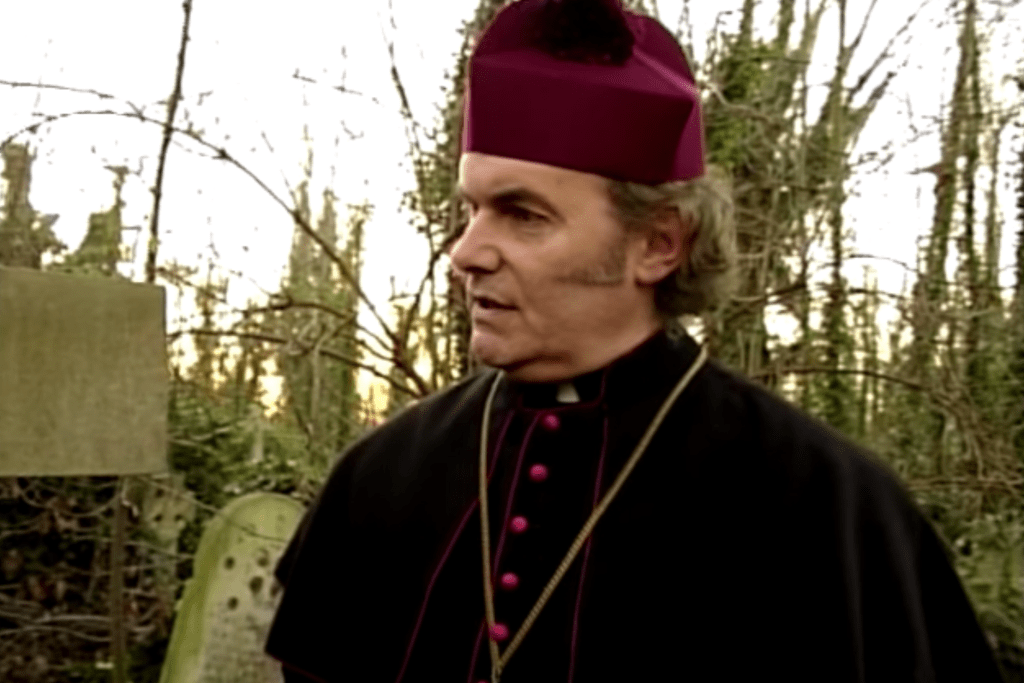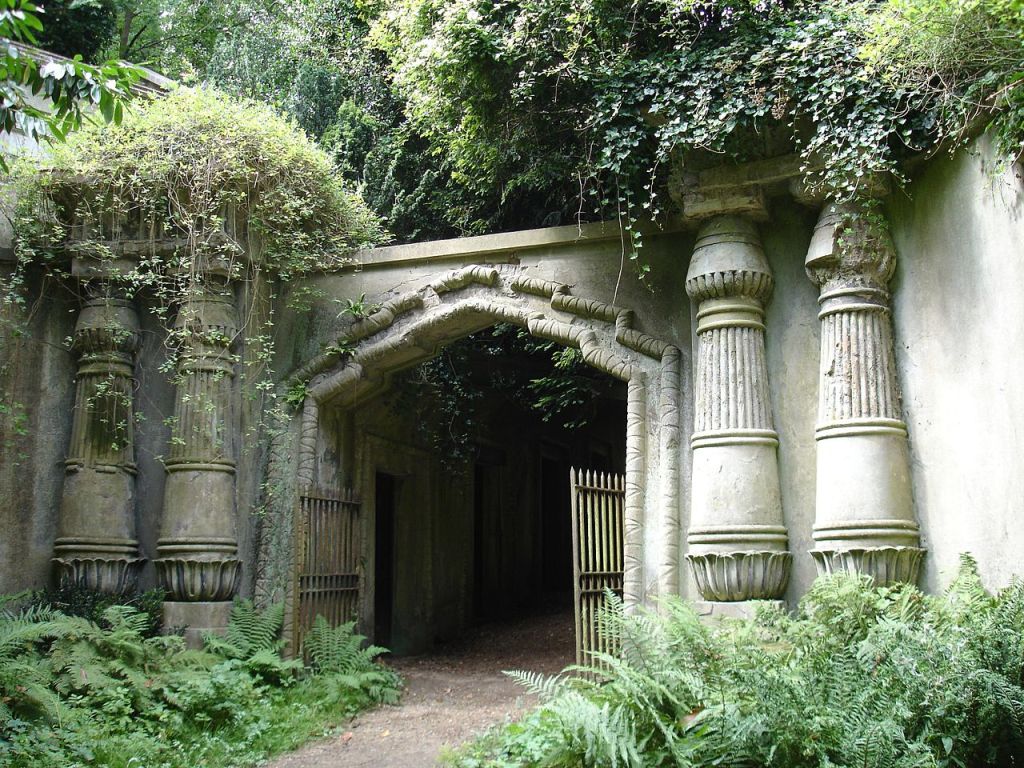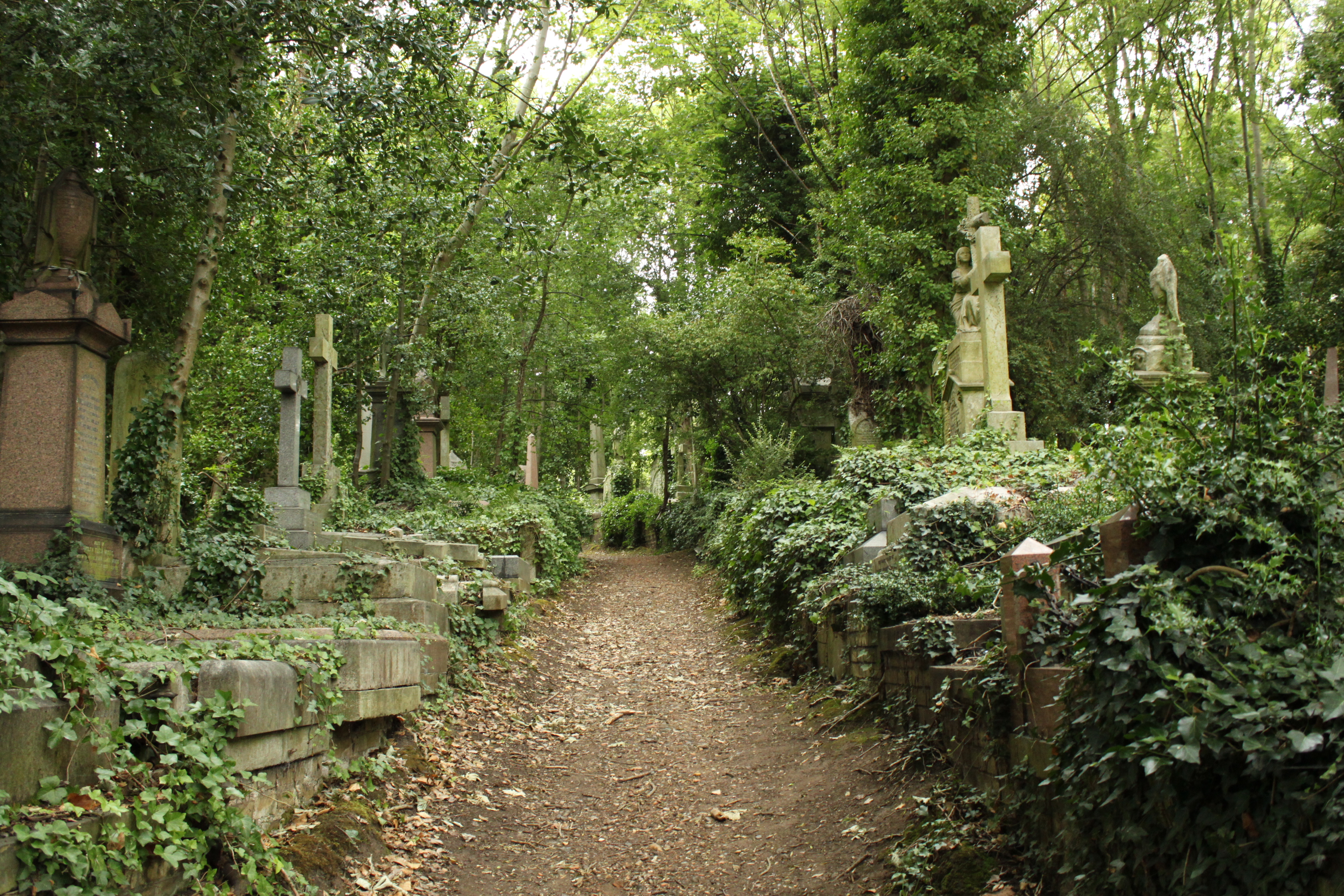Rumours of a supernatural being that became known as the Highgate Vampire caused a media storm in London between 1969 and 1970. Two self-proclaimed vampire hunters, and the feud that developed between them, further fueled public interest in the case.
Highgate Cemetery is a large burial ground in North London, with around 170,000 people interred there. First established in 1839, Highgate is one of a group of London cemeteries known as the Magnificent Seven. These large cemeteries were opened between 1833 and 1841 in an effort to alleviate the dangerous overcrowding in London’s parish graveyards. Alongside Highgate, the Magnificent Seven comprises Kensal Green, West Norwood, Abney Park, Brompton, Nunhead and Tower Hamlets.
In 1967, two teenage girls walking home past the Highgate Cemetery reported seeing the dead rising from their graves inside the cemetery. The following November, a group of young people exploring the cemetery at night discovered several graves desecrated, the latest event in a long-running string of vandalism at Highgate. Flowers had been taken from graves and arranged in circular patterns, as well as being used to form arrows pointing at a fresh grave, that had been uncovered. Inside, the coffin had been opened and the body disturbed. A heavy iron spike had been hammered through the lid of the coffin and into the chest of the corpse inside. Reports also surfaced of several animals being found dead in the cemetery, having been drained of blood.

In February 1970, ‘psychic investigator’ and head of the British Psychic and Occult Society, David Farrant, wrote to the Hampstead and Highgate Express describing an encounter with a grey figure inside the graveyard, which he believed to be supernatural in nature. Several other people came forward in response, describing encounters with various ghosts, including:
- A tall man in a top hat that would disappear through the cemetery walls
- A ghostly cyclist
- An angry face looking out through the bars of the cemetery gate
- A woman in a white dress
- A figure wading in one of the cemetery’s ponds
- A pale figure that would glide across the ground
- Faint voices or the sound of bells
Self-described exorcist and founder of the rival British Occult Society, Sean Manchester, put forward the theory that the grey figure was a vampire, summoned to the cemetery by occultist activity by intruders visiting at night. He later embellished this with the claim that the king of vampires had taken up residence in Highgate.
A dispute broke out between Farrant and Manchester, with both claiming that they would be the one to exorcise or destroy the creature and attempting to minimise the role of the other in the media narrative. Manchester declared that he would exorcise the creature on Friday the 13th of March 1970, a date he claimed had supernatural significance. Both he and Farrant were interviewed by Thames TV ahead of the exorcism. Within two hours of the footage being aired, a mob of amateur vampire hunters had formed outside the cemetery. While the cemetery had been locked for the evening and police attempted to disperse the crowd, many clambered over gates and walls anyway.

The following August, the burnt remains of a woman’s body were found in the cemetery. Her head had been removed, with media reporting that the police suspected the head was used in a black magic ritual. A few days later, Farrant was caught by police in the cemetery late at night, equipped with a crucifix and wooden stakes. He was arrested, but the case against him was later dismissed.
Farrant later described returning to the cemetery a few nights later, in the company of a number of unnamed accomplices, including a psychic. When the psychic indicated that the vampire was inside a large family vault, the group forced the doors open and pried open a coffin they found inside. His companions talked him out of driving a stake through the corpse’s chest, and instead the group left after leaving garlic and incense inside the vault. Three years later, Manchester claimed that he had brought an end to the creature after staking it through the heart at a nearby house in Crouch End.

The feud between Farrant and Manchester came to a head in 1973, generating a further flurry of media attention when the pair were supposed to meet on Parliament Hill for a ‘magician’s duel’ on Friday the 13th April. The meeting never happened, and a year later Farrant was imprisoned for damaging memorials and interfering with remains in Highgate. Farrant claimed that an otherwise unknown satanist sect had been responsible for the damage and disruption, rather than him.
Both Farrant and Manchester published books about their claimed experiences with the Highgate Vampire. The pair continued to trade barbs across blogs and social media up until Farrant’s death in 2019.

What a terrifying article it is! The horrific incidents invoke the likeness of the mystery of the White Castle ripper with supernatural reminiscences. Methinks the guilty may be a satanist cult.
LikeLiked by 1 person